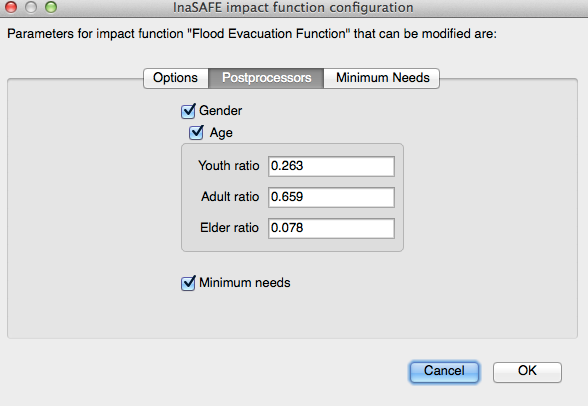Post-processors¶
This document explains the purpose of post-processors and lists the different available post-processors and the requirements each has to be used effectively.
What is a post-processor?¶
A post-processor is a function that takes the results from the impact function and calculates derivative indicators. For example, if you have an affected population total, the Gender post-processor will calculate gender specific indicators such as additional nutritional requirements for pregnant women.
Selecting a post-processor¶
Post-processors and their settings can be edited in the user configurable function parameters dialog. See Setting analysis parameters for more information.
To disable a post-processor simply go to the Postprocessors tab and enable or disable any post-processor you like by clicking on the checkbox next to it. You can even set the post-processing values you like here by entering the values in the fields.
If you don’t see a post-processors field, it means that the impact function you are trying to use does not support any post-processor.

Post-processor configuration¶
Each activated post-processor will create an additional report in the dock and in the printout. If problems arise while post-processing, the system will inform you and will skip post-processing.
Creating post-processors¶
If you feel there is an important post-processor which is missing, there are two avenues you can follow:
You can develop it yourself or with the aid of a programmer who has a good understanding of the python programming language.
You can file a ticket on our issue tracking system, and if time and resources allow we will implement it for you.